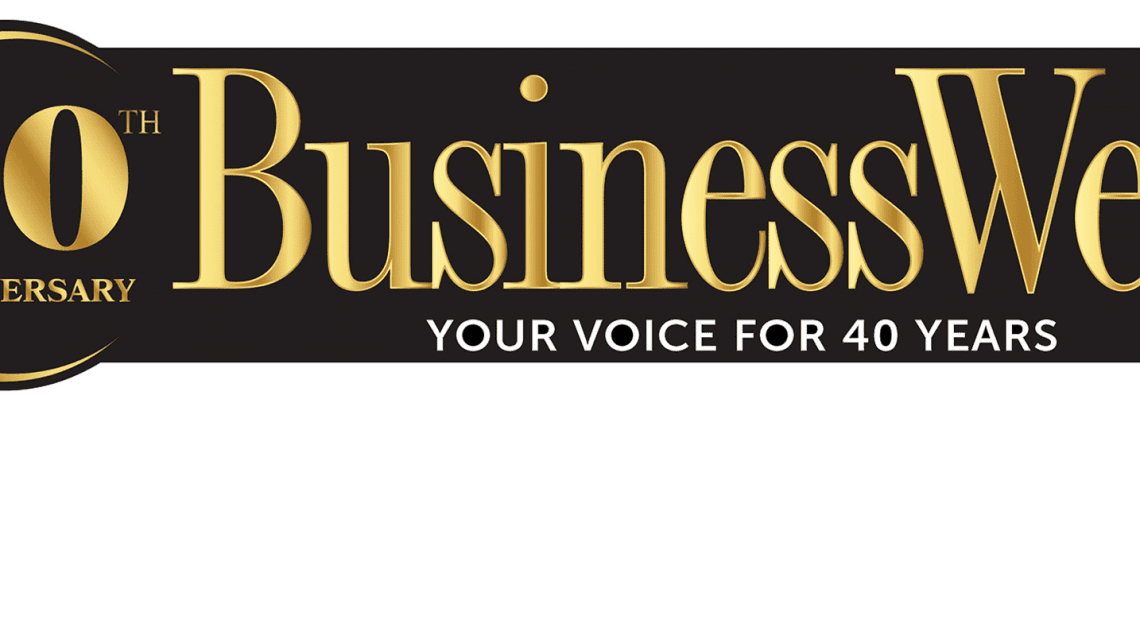
40 Years of Technology
Welcome to an Exciting, Uncertain New World
 On Jan. 22, 1984, a good deal of the U.S. watched — for the only time, because it never aired again — a commercial that was, in many ways, more interesting than the beatdown the Los Angeles Raiders were putting on the Washington Redskins in Super Bowl XVIII.
On Jan. 22, 1984, a good deal of the U.S. watched — for the only time, because it never aired again — a commercial that was, in many ways, more interesting than the beatdown the Los Angeles Raiders were putting on the Washington Redskins in Super Bowl XVIII.
Directed by Ridley Scott, the spot, titled “1984,” used dystopian imagery to introduce Apple’s Macintosh personal computer, which would hit stores two days later, with the promise of allowing the average person access to the kind of computing power formerly reserved for big corporations.
The world would never be the same. The home computer was already a thing — it was, in fact, Time magazine’s ‘Machine of the Year’ in 1982 — but the Macintosh introduced a wave of innovation and ease of use that eventually made computers ubiquitous in both homes and businesses — for better (productivity) and, arguably, worse (a pervasive blurring between work and home life).
The latter, of course, became possible with the rise of the internet, email, and, later, social media.
“The internet has completely changed how we work, how we communicate, how we conduct business, how we learn, how we consume entertainment, and a million other aspects of our daily lives that have become so normal, we have forgotten that, 30 years ago, they didn’t exist,” said Delcie Bean, CEO of Hadley-based Paragus Strategic I.T., adding that technology is still changing things, in ways that feel unstoppable.
“If we step back and truly think about just how much changed as a result of the internet and we look at how quickly it happened,” he went on, “AI is going to have a much bigger impact in a much shorter amount of time.”
And that will require the kind of nimbleness and ability to pivot that Sean Hogan has demonstrated through his entire career, since launching Hogan Associates (later Hogan Communications and now Hogan Technology, based in Easthampton), with an initial focus on cabling and infrastructure.
“We saw the ethernet becoming a thing, and everyone needed wiring; there was no networking back then,” he told BusinessWest. “For six or seven years, we did strictly cabling. We ran it up and down the East Coast; we had a ton of work.”
After surviving the recession of 1989-90, Hogan began to see telecommunications as a huge opportunity, and that became his first major pivot.
“Back then, very few companies had voicemail. People hate it nowadays, but they wanted it then. So we started selling phone systems that could integrate with computers and voicemail. We did very well selling phone systems, started getting attention from bigger companies, and ended up selling the Toshiba name. That brand gave us recognition. As a company, we built a great base of clients; we were thinking phones would never go away.”
Delcie Bean
“If we step back and truly think about just how much changed as a result of the internet and we look at how quickly it happened. AI is going to have a much bigger impact in a much shorter amount of time.”
About 16 years ago, Hogan began to move toward its current IT management model — which, these days, focuses on managed security as much as anything else, to respond to ever-growing cyberthreats. “The help desk is still critical, but if you’re not secure, that’s the biggest problem.”
And in the next few decades, companies like Hogan’s will have to keep adapting, because opportunities, challenges, and threats in the IT world certainly will.
“We’ve been able to keep educating ourselves enough to know that we have to be willing to change and accept change as an opportunity,” he said. “We totally believe that’s our culture here. We change when we have something new to learn. We consider ourselves security fiduciaries for clients. We protect our clients to the best of our ability; that’s our number-one job these days.
“Thirty years ago, we’d say we’d provide a solid ethernet foundation and a good network infrastructure,” Hogan added. “We’re still able to do that. But if you’ve got a bad network cable, that’s one thing; if you’ve got CryptoLocker or some other ransomware, that’s a huge threat to your business.”
Breaking the Mold
Joel Mollison, president of Northeast IT in West Springfield, shares a similar story of adaptation and evolution.
“When we started 21 years ago, the market was referred to as ‘break and fix’: if something breaks, we fix it,” he said, adding that he might do some network troubleshooting or provide very basic antivirus solutions, but in general, the work was sporadic.
Sean Hogan
“We change when we have something new to learn. We consider ourselves security fiduciaries for clients. We protect our clients to the best of our ability; that’s our number-one job these days.”
Around 15 years ago, Northeast switched to the model of a managed service provider, providing ongoing services under contracts, doing more diligence for each client. “We created the ability to form long-term relationships with clients, understanding their networks and providing them with hardware and other services, and also networking equipment.”
The Great Recession impacted the IT world, and many businesses were just trying to stay afloat and weren’t necessarily investing in their systems, Mollison recalled, but as brighter economic times re-emerged, managed services and IT tools had become more sophisticated, with more integration across platforms, automated monitoring services, and more complex cybersecurity tools, and businesses of all kinds were increasingly recognizing the need for them.
“Things have escalated in terms of the veracity and tools used by the threat actors; they have better tools and techniques,” he explained, noting that businesses need to combat online threats not just by installing protective technology, but by training employees to recognize increasingly sophisticated phishing schemes, which promise to become more realistic and targeted in the AI era.
“A lot of this has been driven by insurance — cyberliability policies dictating that businesses must have certain elements,” Mollison noted. “We get handed policy affidavits to review what’s installed. But it’s a good conversation piece, a chance to talk about where they’re at and where they can make some progress.”
Bean, who launched a solo business fixing home computers in 2002 and now boasts a growing team of 65 employees, made his own important pivot around 2011, choosing to focus only on commercial clients at a time when residential work still represented 60% of his revenue.
It has proved to a successful decision, as more businesses have realized they need a partner like Paragus (or Hogan, Northeast, or other regional IT players) at a time when, as noted earlier, networks and cybersecurity are becoming more complicated.
“Even the large Fortune 100 companies rely on consultants and experts and advisors because this field is just so broad, and it’s touching businesses in so many ways,” Bean said. “It takes a team of experts with a lot of different experience. Even we are constantly leaning on experts and outside advisors and doing research because it is just such a broad field, and it’s changing so quickly.”
Joel Mollison
“Things have escalated in terms of the veracity and tools used by the threat actors; they have better tools and techniques.”
Mollison said there’s a reason his firm has become more security-centric than ever. “We’ve had customers come to us who have experienced a breach, dealt with ransomware, lost hundreds and hundreds of hours while the whole rebuilding process took place. They couldn’t produce anything, there were legal fees, information was compromised. A lot of those factors are at play.”
Indeed, 20 years ago, smaller businesses didn’t have much to worry about when it came to aggressive cyberattacks, but experts agree that everyone is a target now.
“The thing that’s going to cause some chaos for everyone is the introduction of AI,” Mollison said, citing Microsoft Copilot — an AI-powered tool that automates features for Word, Excel, PowerPoint, Outlook, and Teams — as one example of opportunity married with concern.
“If you’re allowing a system to comb through documents, you know there might be some bad intentions,” he told BusinessWest. “In the wrong hands, somebody could gather a lot of information that could be detrimental to your organization or turn into a security vulnerability, with espionage potential. We’re going to see a lot more AI-generated attacks in the future.”
And AI isn’t going anywhere, Bean said — with all its benefits and potential worries.
“I hate really dire predictions like, ‘if you don’t do this, you’re going to be out of business,’ but in this case, I think it’s right,” he said, adding that AI could be as transformative as the internet started to become 30 years ago. “And I’d like you to name how many businesses you know that don’t use the internet in any way, shape, or form. I would imagine it’s going to be zero.”
Therefore, “if you’re not having those conversations yet, asking those questions, talking to partners, going to webinars, getting informed and educated, I think you’re starting to fall behind,” Bean added. “There’s still plenty of time, but there won’t be for that much longer. I think now is the time for CEOs and C-level staff to really get engaged, to ask questions, to get educated, and to start to figure out where this fits into their business’s strategy and life cycle before they get left behind.”
Future Shock
Hogan has long recognized the growing importance of cybersecurity and its continuing evolution.
“Fifteen years ago, small companies weren’t a target. You had viruses isolated to desktops, but now, everyone’s a target,” he said — and AI will only complicate matters. “You see the bad actors out there that use AI to do deepfakes, do all sorts of bad things. We’re already seeing AI with voice recognition, duplicating voices on the phone. I fear for seniors out there. I’m afraid that’s going to be an issue.”
But AI poses great opportunity as well, Bean said, especially with the emergence of predictive AI.
“It’s going to be based on your specific niche industry, where it’s going to be able to run models and simulations and solve problems within your business or give you hypothetical outcomes to new products or things that you’re thinking of developing,” he explained. “We haven’t quite seen that hit the masses yet, but it’s coming in the next 18 months. And that’s what we need to be prepared for.”
Bean cited Moore’s law, a long-standing observation in the IT world that the number of possible transistors in a computer chip doubles every two years or so.
“This is going to be exponentially faster,” he said. “We are going to see that apply to innovation, where what used to take a decade has already been cut in half a handful of times, and now happens in 12 to 18 months. Soon, that will become six months, and then three months, and then we are going to reach a point where things are changing so quickly that, for a while, it is going to be very difficult to manage until we find some kind of equilibrium and things stabilize — or we find a new normal.”
This brave new world will be a far cry from what we were seeing in 1984 (to cite the titles of two classic dystopian works), but businesses that specialize in IT will have to do what they’ve always done: keep pivoting, keep learning, keep adapting … and keep their client businesses from being overwhelmed by the next big thing.








